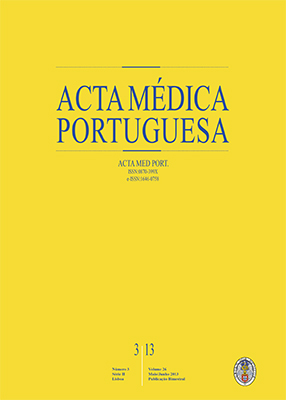Physical Activity and Respiratory Function: Corporal Composition and Spirometric Values Analysis
DOI:
https://doi.org/10.20344/amp.70Abstract
Objective: The main aim of this research project was to measure the effects of physical activity on corporal composition (BMI and waist circumference) on spirometric values and relate these indicators to the respiratory/ventilator function.Material and Methods: The sample consisted of 86 individuals, higher education students, with an average age of 21.3 ± 2.4 years, who were divided into two groups: the control group consisted of 28 sedentary subjects (20.9 ± 1.3 years), and the experimental group consisting of 58 subjects (21.5 ± 2.8 years) who undertook supervised exercise. To characterize the sample of the type of physical activity, we used an adaptation of the questionnaire Telama et al.19 We assessed the value of spirometry (PEF, FVC and FEV1) with a Microquark Cosmed spirometer and the BMI and waist circumference. The figures obtained were processed with the S.P.S.S. 19.0, the
t-test, the Levene test, the Mann-Whitney test and the Spearman correlation test, adopting a significance level of 5%.
Results: The experimental group achieved significantly better BMI and waist circumference results (p ≤ 0.05) and in all of the values assessed by spirometry (PEF, FVC and FEV1) compared to the control group. We also found that there is a tendency for a negative correlation between the values of body composition and spirometric values, only observable in some variables (PEF, FEV1), i.e., the higher the values of body composition, the lower the spirometric values.
Conclusion: The students that performed supervised exercise had higher levels of body composition and lung function. Poor BMI and waist circumference values may lead to respiratory dysfunction in terms of ventilation and the respective lung volumes, limiting the practice of physical activity and increasing the probability of respiratory pathologies.
Downloads
Downloads
Published
How to Cite
Issue
Section
License
All the articles published in the AMP are open access and comply with the requirements of funding agencies or academic institutions. The AMP is governed by the terms of the Creative Commons ‘Attribution – Non-Commercial Use - (CC-BY-NC)’ license, regarding the use by third parties.
It is the author’s responsibility to obtain approval for the reproduction of figures, tables, etc. from other publications.
Upon acceptance of an article for publication, the authors will be asked to complete the ICMJE “Copyright Liability and Copyright Sharing Statement “(http://www.actamedicaportuguesa.com/info/AMP-NormasPublicacao.pdf) and the “Declaration of Potential Conflicts of Interest” (http:// www.icmje.org/conflicts-of-interest). An e-mail will be sent to the corresponding author to acknowledge receipt of the manuscript.
After publication, the authors are authorised to make their articles available in repositories of their institutions of origin, as long as they always mention where they were published and according to the Creative Commons license.









